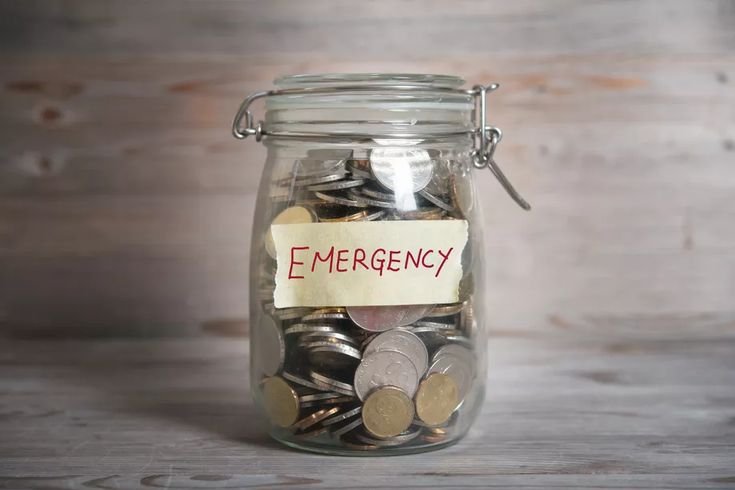
As bad emergencies can sometimes occur, it is essential to save some money as emergency saving funds. It has always been a task to save money for emergencies, and even more challenging to maintain. An emergency fund as a financial safety measure provides a cushion to cover unexpected expenses, such as medical emergencies, unemployment, car insurance or repair, and house loans. This article will teach you to create and maintain a strong emergency savings fund.
Understanding the Importance of an Emergency Fund
There are multiple reasons why an emergency fund is important. Let’s talk about financial security. A good financial budget helps provide peace of mind, knowing you gave money as a backup barrier to handle and cope with emergencies.
- Avoiding debt: An emergency fund can prevent you from using credit cards or loans, which can lead to a debt cycle.
- Having a financial backup relieves and releases pressure regarding immediate financial constraints such as medical screenings, leading a toxic job, or taking time off for personal reasons.
- Stress Reduction: Knowing you have funds set aside can significantly reduce stress during emergencies.


How Much Should You Save?
The money for an emergency fund varies depending on person-to-person needs and preferences. Still, normally, the advice is to save between three to six months’ worth of living expenses. There are some factors for the target amount:
- Job stability: A three- to six-month expense might be enough if the person has a stable and reliable job with a consistent income. If your job is less secure or has trouble, you should have a variable income for six months or more.
- Dependents: a person in the family or friend you can rely on; you will need a larger fund to cover additional expenses.
- Monthly expenses: First, calculate your necessary and important expenses, including groceries, rent, utilities, insurance, transportation, and monthly medicines. Multiply this by the number of months you want to cover.
Steps to Build Your Emergency Fund
It is important to have a saving goal that determines the total amount you need based on the factors above. Creating a budget is also important. It includes an analysis of your income and expenses to determine where you can cut back and allocate more toward your emergency fund. Opening a separate savings account is also a good option to keep your emergency fund and easily accessible savings account to avoid spending it on unnecessary things. Motorize the transfer from your checking account to the emergency fund to ensure consistent savings. Start small; it’s an idea to begin with manageable saving goals, such as saving 500 or $1000, and gradually increase depending on how you adjust your budget. For example, if you get extra income that is a bonus, tax, refund, or gift, consider adding a portion to your emergency fund and increase the contribution. Secondly, track progress; regularly monitor your savings to stay motivated and make adjustments as needed.
Maintaining Your Emergency Fund
Replenish after use; if you need to use your emergency fund, prioritize replenishing it as soon as possible. Regular reviews are also important; periodically review your savings and address for changes and expenses or income. Avoid temptation and only use your emergency fund for genuine emergencies, not for unnecessary and discretionary spending or non-essential purchases. Increase savings within income growth; as your income increases, consider raising your savings rate to build a more substantial fund, which will help you. Keep it accessible but separate. Ensure the funds are easily accessible in an emergency but not so convenient that you are tempted to use them for everyday expenses.


Smart Strategies for Growing Your Fund
- Cut Unnecessary Expenses: Review your budget and cut out non-essential expenses. Redirect these savings to your emergency fund.
- Side Hustles: Consider taking on a side job or freelance work to generate additional income for your emergency fund.
- Sell Unused Items: Sell items that are no longer needed. The proceeds can be added to your emergency fund.
- Use Windfalls Wisely: Allocate any unexpected money, such as bonuses or tax refunds, to your emergency fund.
- Negotiate Bills: Negotiate lower rates on insurance or utilities and save the difference.
Investment Options for Your Emergency Fund
While the basic goal of an emergency fund is liquidity, consider these low-risk investment options to earn a small return:
- High-Yield Savings Accounts: These accounts give higher interest rates than uniform savings accounts while keeping your funds accessible.
- Money Market Accounts: These accounts provide a good balance of higher interest rates and liquidity.
- Certificates of Deposit (CDs): For a portion of your fund that you don’t need immediate access to, consider short-term CDs. They offer higher returns but lock your money for a set period.
- Treasury Bills: These are low-risk investments backed by the government, offering slightly higher returns than traditional savings accounts.
Emergency Fund vs. Other Savings
It’s important to differentiate your emergency fund from other savings goals:
- Emergency Fund: Should be liquid and readily accessible for unforeseen expenses.
- Short-term Savings: These are for upcoming expenses like vacations or home improvements. They can be less liquid but should still be relatively accessible.
- Long-Term Savings: For retirement or other distant goals, often invested in higher-risk assets like stocks or mutual funds.


Overcoming Common Challenges
- Low Income: Even with a limited income, start small and consistently save what you can. Every bit adds up over time.
- High Expenses: Look for ways to reduce fixed expenses, such as downsizing living arrangements or renegotiating bills.
- Lack of Discipline: Automate savings to remove the temptation of spending money meant for your emergency fund.

Leave a Reply